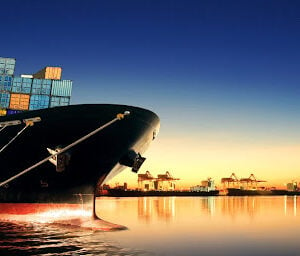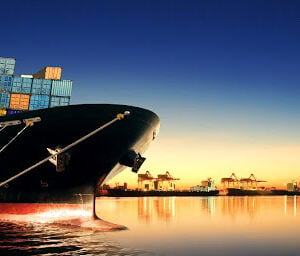

Transporting freight is a crucial aspect of modern commerce, ensuring goods reach their intended destinations efficiently and safely. Within the realm of freight transportation, one significant aspect is the transport of freight equipment. This encompasses a wide range of machinery and materials necessary for various industries. In this article, we’ll delve into the specifics of freight equipment transport, exploring its importance, methods, challenges, and future trends. Here provided more info.
Understanding Freight Equipment Transport
Freight equipment transport involves the movement of specialized machinery, vehicles, and materials required for industrial processes, construction projects, agricultural activities, and more. This encompasses a diverse array of items, including construction equipment like excavators and bulldozers, agricultural machinery such as tractors and combine harvesters, and industrial components like generators and compressors.
Importance of Freight Equipment Transport
The significance of freight equipment transport cannot be overstated in sustaining economic activities across various sectors. Without efficient transportation of equipment, industries would struggle to operate optimally, leading to delays, increased costs, and reduced productivity.
Moreover, timely delivery of equipment is crucial for project timelines in construction, infrastructure development, and manufacturing. Any delay in transporting essential machinery can cascade into delays in project completion, affecting budgets and customer satisfaction. Explore more on this website.
Methods of Freight Equipment Transport
Freight equipment transport utilizes various methods depending on factors such as the size, weight, destination, and urgency of delivery. Some common methods include:
Trucking: Trucking is a widely used method for transporting freight equipment over short to medium distances. Flatbed trucks, lowboys, and specialized trailers are employed to haul heavy equipment securely.
Rail Transport: Rail transport is suitable for long-distance transportation of freight equipment. Railways offer the advantage of high capacity and relatively lower costs for bulk shipments.
Ocean Freight: For international shipments, especially oversized equipment, ocean freight is often preferred. Specialized containers and vessels are used to transport heavy machinery across continents.
Air Freight: When urgency is paramount, air freight becomes the preferred choice despite its higher costs. Air transport is suitable for smaller equipment or critical components that need to reach their destination rapidly.
Intermodal Transport: Intermodal transport involves using multiple modes of transportation, such as trucking, rail, and sea, seamlessly coordinated to optimize efficiency and reduce transit times.
Challenges in Freight Equipment Transport
While freight equipment transport is essential, it comes with its own set of challenges:
Regulatory Compliance: Transporting heavy equipment often requires adherence to strict regulatory standards concerning weight limits, permits, and safety protocols, adding complexity to logistics operations.
Infrastructure Constraints: Inadequate infrastructure, such as poorly maintained roads or insufficient railway networks, can hinder the smooth movement of freight equipment, leading to delays and increased costs.
Risk of Damage: Heavy machinery is susceptible to damage during transportation, especially if not adequately secured or handled with care. Mitigating this risk requires robust packaging, securing methods, and trained personnel.
Cost Considerations: Freight equipment transport can be expensive, especially for oversized or overweight shipments. Balancing cost-effectiveness with timely delivery is a constant challenge for logistics managers.
Environmental Impact: Transportation, particularly over long distances, contributes to carbon emissions and environmental degradation. Minimizing the carbon footprint of freight equipment transport requires adopting sustainable practices and alternative fuel technologies.
Future Trends in Freight Equipment Transport
As technology continues to advance and global supply chains evolve, several trends are shaping the future of freight equipment transport:
Automation: Automation technologies, including autonomous vehicles and drones, hold the potential to revolutionize freight transport, enhancing efficiency, reducing costs, and improving safety.
Telematics and IoT: Integration of telematics and Internet of Things (IoT) devices into freight equipment enables real-time tracking, remote diagnostics, and predictive maintenance, optimizing fleet management and reducing downtime.
Green Initiatives: Increasing awareness of environmental sustainability is driving the adoption of eco-friendly practices in freight transport, such as electrification of vehicles, use of renewable fuels, and modal shifts to more energy-efficient modes of transportation.
Digitalization: Digital platforms and solutions are streamlining logistics operations, from booking and scheduling to route optimization and documentation management, enhancing transparency, and efficiency throughout the supply chain.
Innovations in Freight Equipment Transport
Electric and Hybrid Vehicles: The transition towards electric and hybrid vehicles in freight transport is gaining momentum, driven by advancements in battery technology and environmental concerns. Electric trucks and hybrid locomotives offer reduced emissions and operational costs, making them increasingly attractive options for freight transportation.
Last-Mile Delivery Solutions: Last-mile delivery, the final leg of the transportation process from distribution center to the end consumer, presents unique challenges. Innovations such as autonomous delivery robots, electric cargo bikes, and drone delivery systems are revolutionizing last-mile logistics, improving efficiency and reducing congestion in urban areas.
Blockchain Technology: Blockchain technology is being explored to enhance transparency, traceability, and security in freight transportation. By providing an immutable record of transactions and supply chain events, blockchain can improve visibility and trust among stakeholders, mitigating issues such as counterfeiting and theft.
Predictive Analytics and AI: Predictive analytics and artificial intelligence (AI) are empowering freight operators to optimize routing, scheduling, and resource allocation based on real-time data and predictive models. By analyzing historical trends, weather patterns, traffic conditions, and other variables, AI-driven systems can enhance decision-making and minimize delays in freight transport.
In conclusion
Freight equipment transport plays a vital role in facilitating economic activities across various industries. Understanding its importance, methods, challenges, and future trends is essential for stakeholders involved in logistics and supply chain management. By embracing technological innovations, sustainable practices, and collaborative approaches, the freight transport industry can overcome challenges and usher in a more efficient, resilient, and environmentally friendly future.
The post International Freight Equipment Transport Demystified appeared first on Social Media Explorer.
* This article was originally published here
(” Learn How to Make Money With Affiliate Marketing – http://bit.ly/make_online_now “)
Comments are closed.